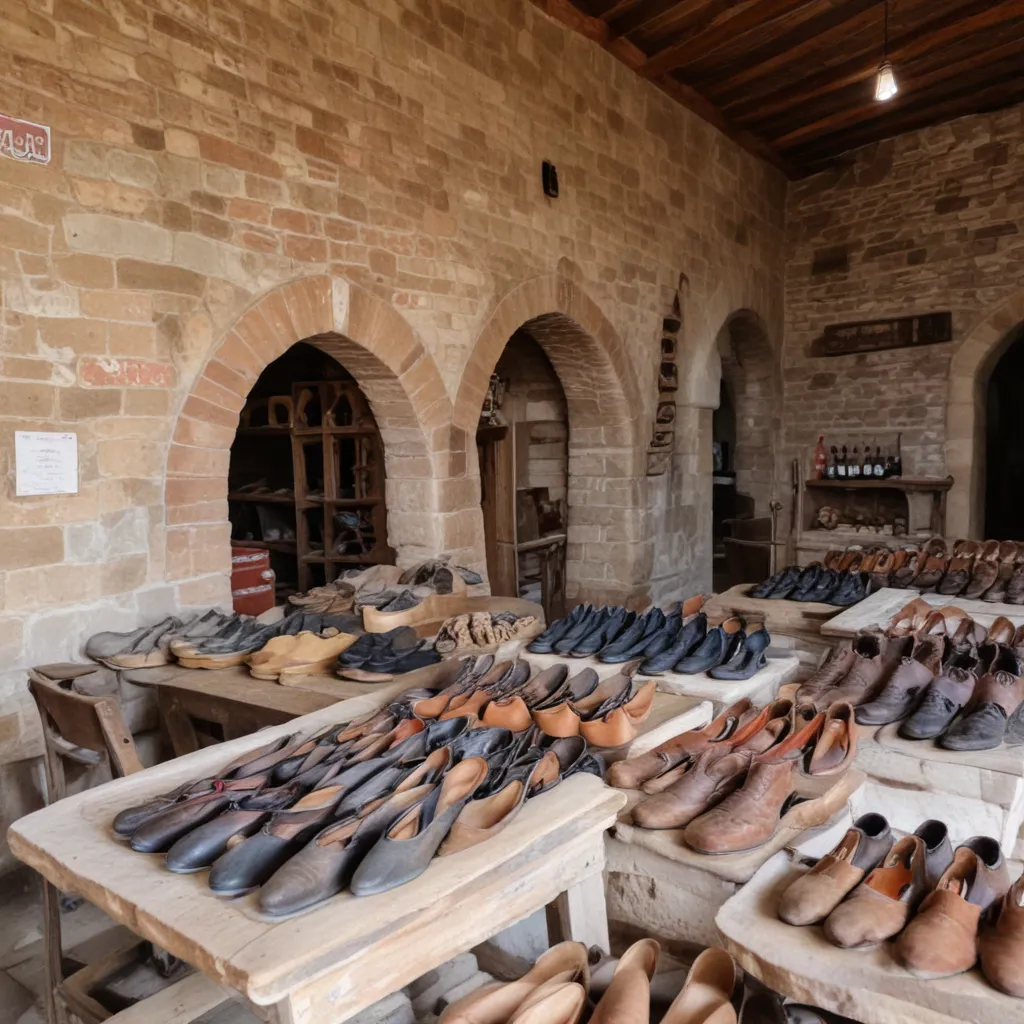
Areni, Armenia: Discovering the World’s Oldest Shoe & Winery
In the rugged, sun-dappled foothills of Armenia’s Vayots Dzor province, an astonishing archaeological trove has emerged, shining new light on the ancient origins of viticulture and the evolution of human civilization. Amidst the dramatic limestone cliffs and lush river valleys, the Areni-1 cave complex has yielded a pair of remarkable discoveries: the world’s oldest known leather shoe and the earliest confirmed winery ever uncovered.
Historical Context
Ancient Footwear Unearthed
In 2008, archaeologist Diana Zardaryan made a remarkable find deep within the Areni-1 cave system – a remarkably well-preserved leather shoe, dating back an astonishing 5,500 years to the Chalcolithic (or Copper Age) period. Meticulously crafted from a single piece of cowhide, the Areni-1 shoe measures 24.5 centimeters long and 7.6 to 10 centimeters wide, perfectly fitted to the right foot of its ancient owner.
Significance of Shoe Discovery
This stunningly intact relic, now on display at the History Museum of Armenia in Yerevan, provides an unprecedented window into the material culture of a long-vanished world. The shoe’s construction techniques and materials offer insight into the sophisticated leatherworking skills of its Copper Age creators, while its state of preservation – stuffed with grass to maintain its shape – suggests a focus on practical, long-term storage.
Dating the Shoe’s Origins
Radiocarbon dating has firmly established the Areni-1 shoe’s chronology, placing it firmly within the Chalcolithic period between 4000 and 3500 BC. This remarkable find predates the earliest known footwear from ancient Egypt and Mesopotamia by well over a millennium, cementing Armenia’s role as a cradle of early human civilization.
Winery Excavations
Uncovering the Ancient Winery
Just seven months after the Areni-1 shoe captivated the world, the same cave system yielded an even more breathtaking discovery – the world’s oldest known winery, dating back an astonishing 6,100 years. Led by a team of Armenian and international archaeologists, the excavations uncovered a wine press, fermentation vats, storage jars, and an array of pottery shards – the most comprehensive evidence of ancient winemaking ever found.
Analyzing the Winemaking Process
The layout of the winery, with its grape-stomping basin and collection vat, suggests that the Copper Age vintners employed a time-honored method of foot-treading to extract the grape juice. This juice would then have been left to ferment in the cool, dry conditions of the cave, before being stored in large ceramic vessels for aging and consumption.
Significance of the Winery Findings
The Areni-1 winery predates the next-oldest known winemaking facility, located in the West Bank, by well over a millennium. This find firmly establishes Armenia as the birthplace of viticulture, confirming the region’s role as a pioneering center of agricultural innovation during the dawn of human civilization.
Geographical Considerations
Areni’s Unique Terrain
The Areni-1 cave complex is situated in a picturesque region of Armenia known for its dramatic, rugged beauty. Nestled along the banks of the Arpa River, the site is surrounded by towering limestone cliffs and lush, verdant valleys – an ideal setting for the development of early winemaking practices.
Climate’s Impact on Viticulture
The cool, dry microclimate of the Areni-1 cave would have provided near-perfect conditions for the long-term storage and aging of wine, helping to preserve the precious libations produced by the Copper Age vintners. The region’s sunny, temperate growing season, with its consistent rainfall, would have also been well-suited to the cultivation of the Vitis vinifera grape variety, the progenitor of virtually all modern wine grapes.
Archaeological Site Preservation
The Areni-1 cave’s natural, sheltered environment has played a crucial role in the remarkable preservation of the artifacts found within. While many ancient archaeological sites have been ravaged by the elements or human activity over the millennia, the Areni-1 complex has managed to safeguard its treasures, allowing modern scholars to piece together an unprecedented view of Chalcolithic life.
Cultural and Historical Implications
Insights into Ancient Lifestyles
The discoveries at Areni-1 provide unprecedented glimpses into the daily lives and cultural practices of the Copper Age inhabitants of this region. The presence of the ancient winery, along with the discovery of numerous burials and funerary artifacts, suggests that winemaking played a central role in the religious and social rituals of these early communities.
The Shoe’s Symbolism and Meaning
Beyond its practical uses, the Areni-1 shoe may have held deep symbolic significance for its owners. In many ancient societies, footwear was imbued with spiritual meaning, often associated with status, identity, or even the afterlife. The shoe’s careful preservation and placement within the cave complex underscores its importance within the cultural framework of this long-lost civilization.
Winery’s Role in Community Life
The scale and sophistication of the Areni-1 winery indicates that winemaking was not merely a casual pastime, but rather a highly specialized and integral component of Copper Age society. The production of this ancient libation was likely tied to broader agricultural, social, and religious practices, serving as a unifying force within the community.
As the world’s attention turns to this remarkable archaeological treasure trove, the Areni-1 cave complex continues to yield new insights into the origins of human civilization. From the exquisite leather shoe to the groundbreaking winery, these priceless artifacts offer a rare glimpse into the long-vanished world of our Chalcolithic ancestors – a world where the fruits of the vine were not merely a pleasure, but an integral part of the fabric of life itself.
